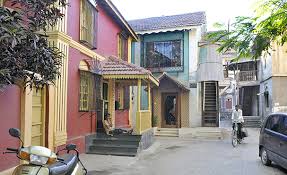Reap benefits of redevelopment without redeveloping
The owners of heritage properties will now be able to enjoy the fruits of redevelopment without messing around with the history and architecture of their buildings.
In a shift from regulation to rewards, the new Heritage Regulation Policy proposes to allow the owners of such properties to not only sell the extra FSI available to them as Transfer Development Rights (TDR), but also sell it at market rates.
The move could boost the preservation of over 900 heritage structures in the city.
The earlier policy only provided some petty tax benefits to owners of heritage properties and allowed only plain vanilla transfer of extra FSI – that is 1000 sq ft of extra of FSI in Colaba would earn the owner 1000 sq ft of FSI in, say, Dahisar.
This obviously was not very attractive because 1000 sq ft of FSI in Colaba does not have the same value as 1000 sq ft of FSI in Dahisar.
According to civic rules, no TDR can be used in the island city. So, all the additional FSI available to the owners of heritage properties must be utilized in the suburbs.
The new policy changes this by linking the sale of extra FSI to its worth as per the government’s ready-reckoner rates. Simply put, if the owner of a heritage building in Colaba has 1000 sq ft of extra FSI, which he cannot utilize because he is not allowed to redevelop the building, he will get TDR rights worth the ready-reckoner value of the additional FSI he holds.
The ready reckoner rate in Colaba is Rs 19,000 per sq ft, which makes the value of 1000 sq ft of TDR Rs 1.9 crore.
The owner can thus use FSI worth Rs 1.9 crore in Dahisar. The ready reckoner rate in Dahisar is roughly Rs 8000 per sq ft. This means, the owner will get an FSI of nearly 2,300 sq ft in Dahisar.
The owner would then have a choice of either using this FSI in a property he may develop in the suburbs, or simply sell to it to a builder.
The Mumbai Heritage Conservation Committee, whose brainchild the new policy is, had recently written to the state government’s Urban Development department, making it clear that unless an incentive-based policy was brought in, it would be difficult to save Mumbai’s heritage.
The new policy also makes provision for repairs and maintenance since owners of heritage buildings find it difficult to maintain old, doddering heritage structures. Many of the buildings are owned by landlords who hardly have funds to undertake routine repairs.
If an owner spends Rs 10 lakh on repairing his heritage building, then TDR worth Rs 10 lakh would be available to him for use in any building or project in the suburbs.
However, all such repairs will have to be carried out as per the sanctions of the MHCC. A heritage committee member, who did not wish to be identified, said the new policy will make sure that the owners of heritage properties do not suffer any loss. “The TDR incentive offered today is not enough as the loss of development opportunity is not adequately compensated.
Once it is linked to the ready-reckoner rates, the owner will have an incentive to maintain his building,” he said.
Pointing out that preservation of heritage is a collective responsibility of the city, the policy says: “It is strongly felt that heritage conservation is not getting due consideration from the owners of heritage properties because of the reliance on a regulatory mechanism rather than incentivization.”
Source: http://www.mumbaimirror.com/mumbai/cover-story/New-heritage-rules-to-improve-conservation-by-rewarding-owners/articleshow/19978006.cms

